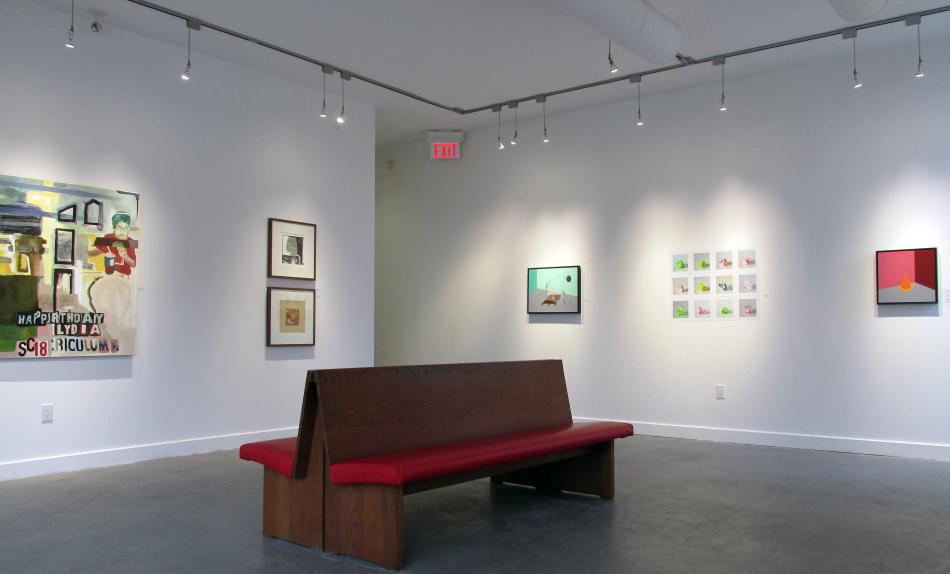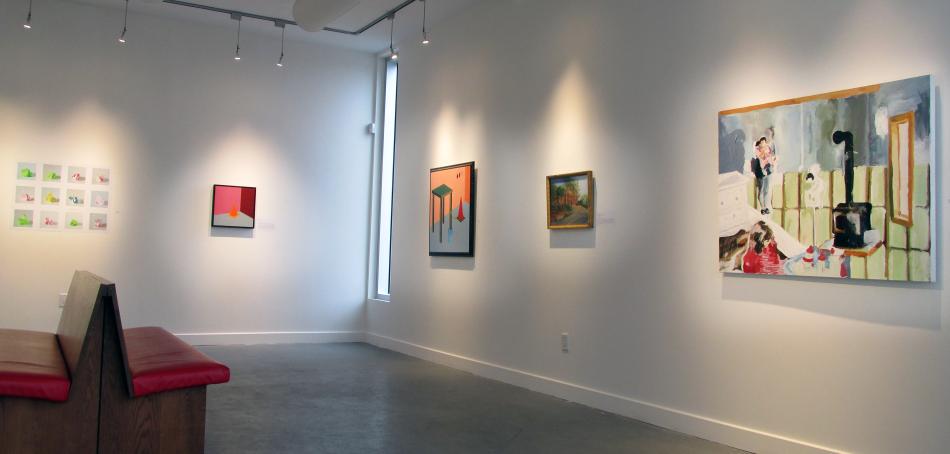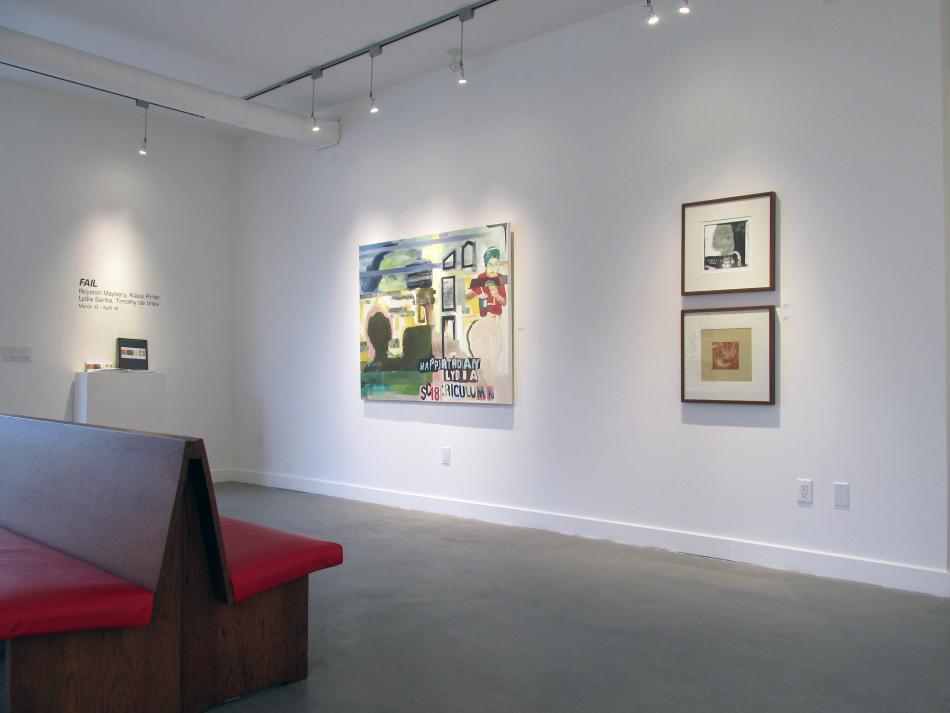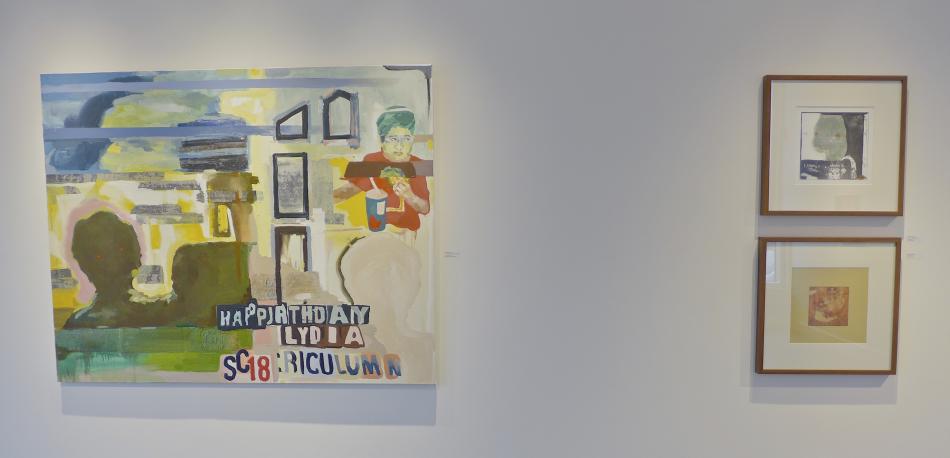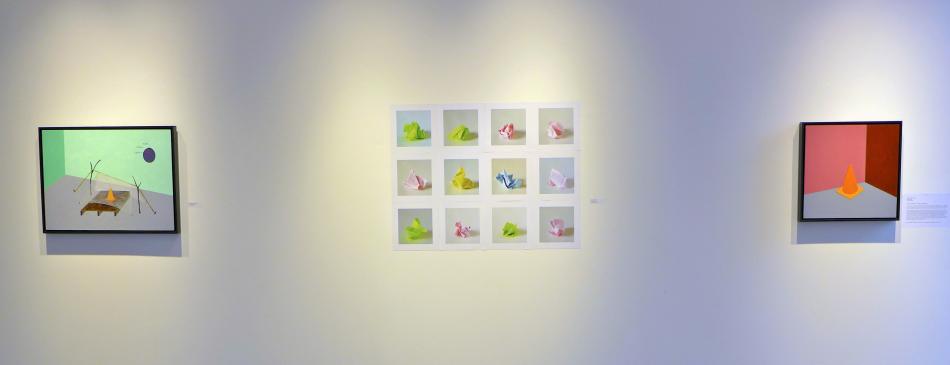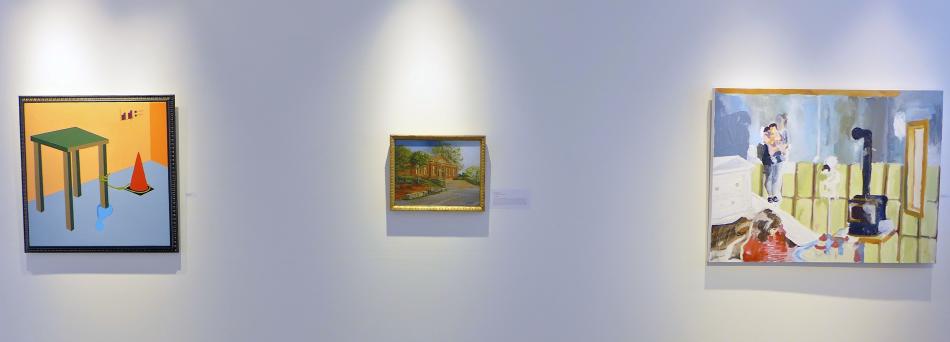FAIL
Royston Maybery, Klaus Pinter, Lydia Santia and Timothy de Vries
-
Opening Reception: Saturday, March 14, 2:00-4:00pm
Failure is often seen as the state of not meeting a desirable or intended objective, the opposite of success. In a studio practice however, failure can often be more valuable than success, as the artwork that fails to meet ones objectives can be used as the counterpoint to a body of work, or possibly open new routes for exploration. Although initially deflating, failure can be a tool to leverage possibility from the mundane becoming fertile ground for innovation. Each of the artists in this exhibition, Royston Maybery, Klaus Pinter, Lydia Santia and Timothy de Vries, engage with this concept from varying perspectives, be it literal representations of failure to works they perceive to be outliers to their practice, or actual failed attempts.
An essay written by Kirby Tobin accompanies this exhibition and can be read below.
Royston Maybery is a regular on the James St Hamilton art scene. He is a member of Hamilton Artists Inc. and submits work regularly to their annual members exhibition. He has exhibited with McMaster’s Art in the workplace, the James St Bookseller and Christ's Church Cathedral during the Hamilton’s 2014 Super Crawl. Maybery runs an art group at HARRRP, St Peter's church on Main St and St Clair.
Klaus Pinter was born in Austria in 1968 and studied at the University of Fine Arts in Linz. He lives and works in Vienna.
Lydia Santia is currently completing her third year of a BFA degree at McMaster University where she is also a teaching assistant in drawing and painting. Utilizing painting and print techniques within her practice, Santia’s current body of work explores the concept of nostalgic loss in trying to recall her typical suburban upbringing.
Timothy de Vries is an artist living in Hamilton, ON. He has been painting in oil and acrylic for the past ten years. His paintings feature posed figures, unusual objects, frozen scenes, and dramatic tableaus. He holds an MA from the Centre for the Study of Theory and Criticism at Western University and currently works as a consultant in the private sector.
Timothy would like to acknowledge the Ontario Arts Council for their generous support.
In Pursuit of the Grand Idea
Featuring works by Klaus Pinter, Lydia Santia, Royston Maybery, and Timothy de Vries, the exhibition FAIL celebrates failure as an unconventional aspect of the exhibiting artists’ practices. The thematic connection of failure is not meant to describe the works on display as unsuccessful, but rather, comment on failure within one’s practice as a necessary step in the journey of artistic growth.
Lydia Santia, an emerging artist whose use of paint and image transfer result in heavily layered and fragmented compositions, is driven by her typical suburban upbringing. In trying to capture the surreal, fantastical nostalgia of childhood, paired with the mundanity of suburbia, Santia portrays the failure she experiences trying to recall her childhood memories in a meaningful way. Her exploration of this subject seeks to reimagine the images and memories she recalls from her upbringing, which Santia self admittedly fails to do adequately. These paintings are regarded by the artist as failures; failed attempts at recalling and understanding the nostalgic idealism of the past. The fragmented and unclear compositions suggest this fabrication and loss of memory. Santia considers this ‘nostalgic loss’—being unable to quite make out one’s significant memories—a universal personal failure, and in her work she addresses her own inability to attain any meaningful sense of nostalgia.
Royston Maybery was discouraged from painting in his formative years due to a belief that he lacked any substantial talent. When he rekindled his interest in painting, he began with landscapes rendered in classical realism. Shortly after its completion, the work in this exhibition, titled Gartshore Thomson Building, was submitted to a juried exhibition and was subsequently rejected. Initially, Maybery was outraged. However, the rejection motivated him to pursue portraiture over landscape; a change in direction Maybery is thankful for as it reflects his current practice. By all other standards this work was not unsuccessful, but having not met the strict expectations he set for himself, Maybery now considers this work a failure. Within the context of the exhibition, the painting can be interpreted as a charming landscape, as well as a symbol for the change that spurned this shift in Maybery’s practice. Maybery continues to paint, having realised the value of this “failure” in his overall practice and the positive impact it has had on his work.
Like Mayberry, Timothy de Vries has also experienced rejection. De Vries’ paintings attempt to communicate the visionary messages that are relayed to him through his dreams. These dreams are represented on the canvas by creating both surreal and symbolic depictions laced with cryptic messages. Similar to Santia’s “nostalgic loss”, De Vries believes that these dreams cannot be fully realised while awake and as a result they fail to live up to the exact portrayal he imagines, resulting in a hybrid of abstract and surrealism. His paintings vary in subject, but are linked thematically and stylistically with flat blocks of colour and unified compositions that break the canvas frame. Initially, with a great sense of expectation, De Vries believed that viewers would immediately identify with the underlying references and symbolism in his work. However, the opposite was true and instead his work was met with confusion, avoidance and criticism. Despite these shortfalls in the eyes of the artist, these paintings remain striking, compelling and playful works of art. De Vries’s paintings, along with the other works showcased in FAIL, are nonetheless striking and successful works outside of the prescribed functions given to them by the artists.
Klaus Pinter stands out for his unique relation to the theme of failure. His photographs depict colourful scraps of paper that have been crumpled up, as if to be thrown away. The crumpled papers connote the moment of brainstorming, where ideas that are considered inadequate are tossed aside. Despite being records of inadequacy, the papers depicted are not just carelessly crumpled, but rather delicately folded, preciously composed and photographed. This reading suggests the value of failed attempts in the journey to a grand idea. These failed ideas have as much thought and consideration as those considered successful, and are equally worthy of showcasing. What is unique about this work when contextualized next to the other exhibiting artists, is that Pinter considers this work a success. Instead of being classified by the artist as a failed attempt, Pinter’s work is in conversation conceptually with the literal meaning of failure, effectively summarizing the overall theme of the exhibition and cohesively bringing together the value of failure in all the works exhibited.
The success of an artist is often accompanied by an expectation that every work made in one’s studio must be a masterpiece. This is an unrealistic expectation and a means of thinking that limits artistic expression, development and improvement. All artists struggle with failure in order to achieve success in their practice. In order to achieve success it is necessary for one to produce “failures.” This exhibition not only acknowledges the importance of this trial and error in contemporary practice, but it celebrates and values this facet of art-making.
Kirby Tobin
Kirby Tobin is an emerging artist whose work combines aspects of both painting and printmaking. While Interning at the Hamilton Artist's Inc., she is completing a Bachelor of Fine Arts from McMaster University, with a minor in Art History. Kirby currently resides in Hamilton, Ontario.
